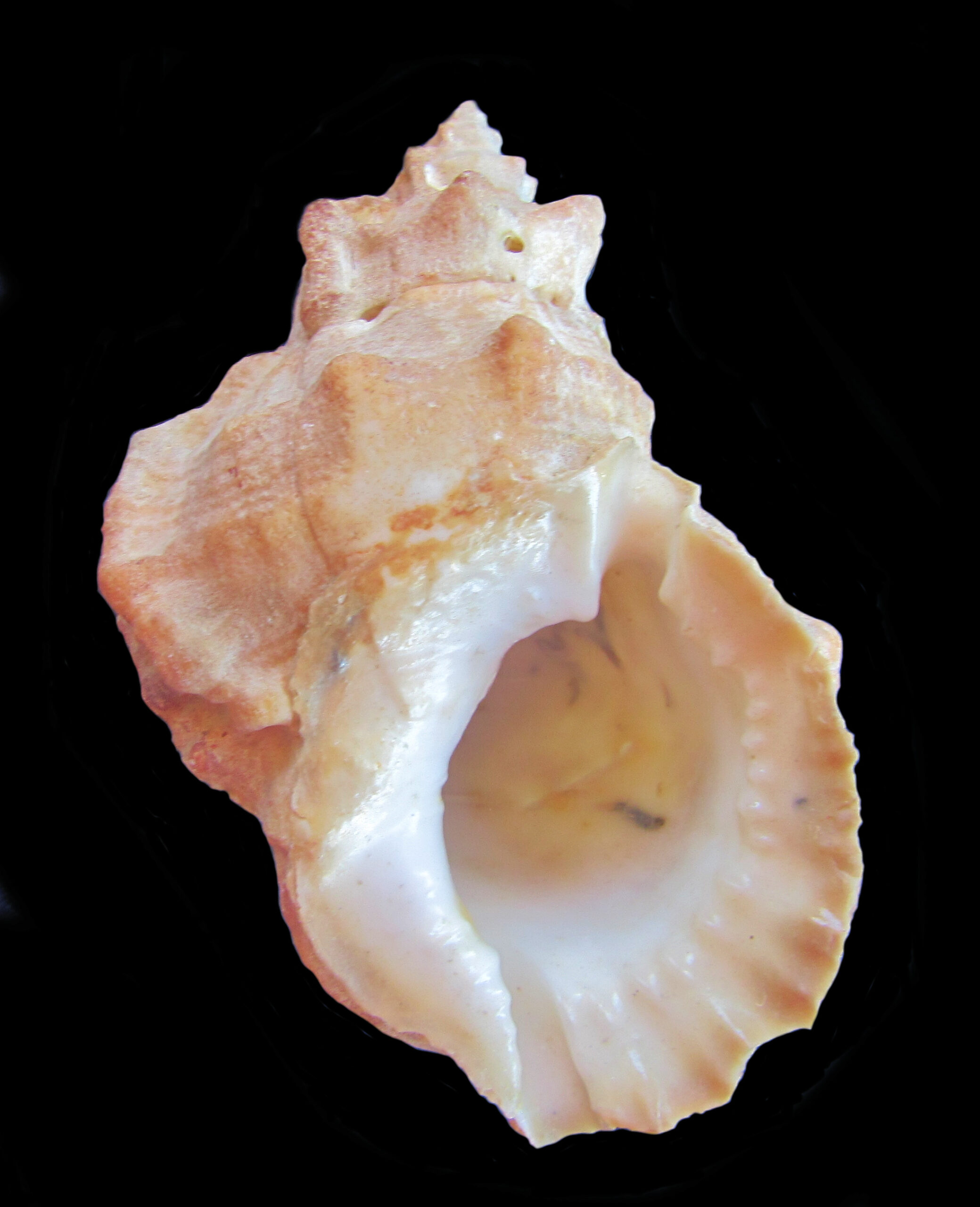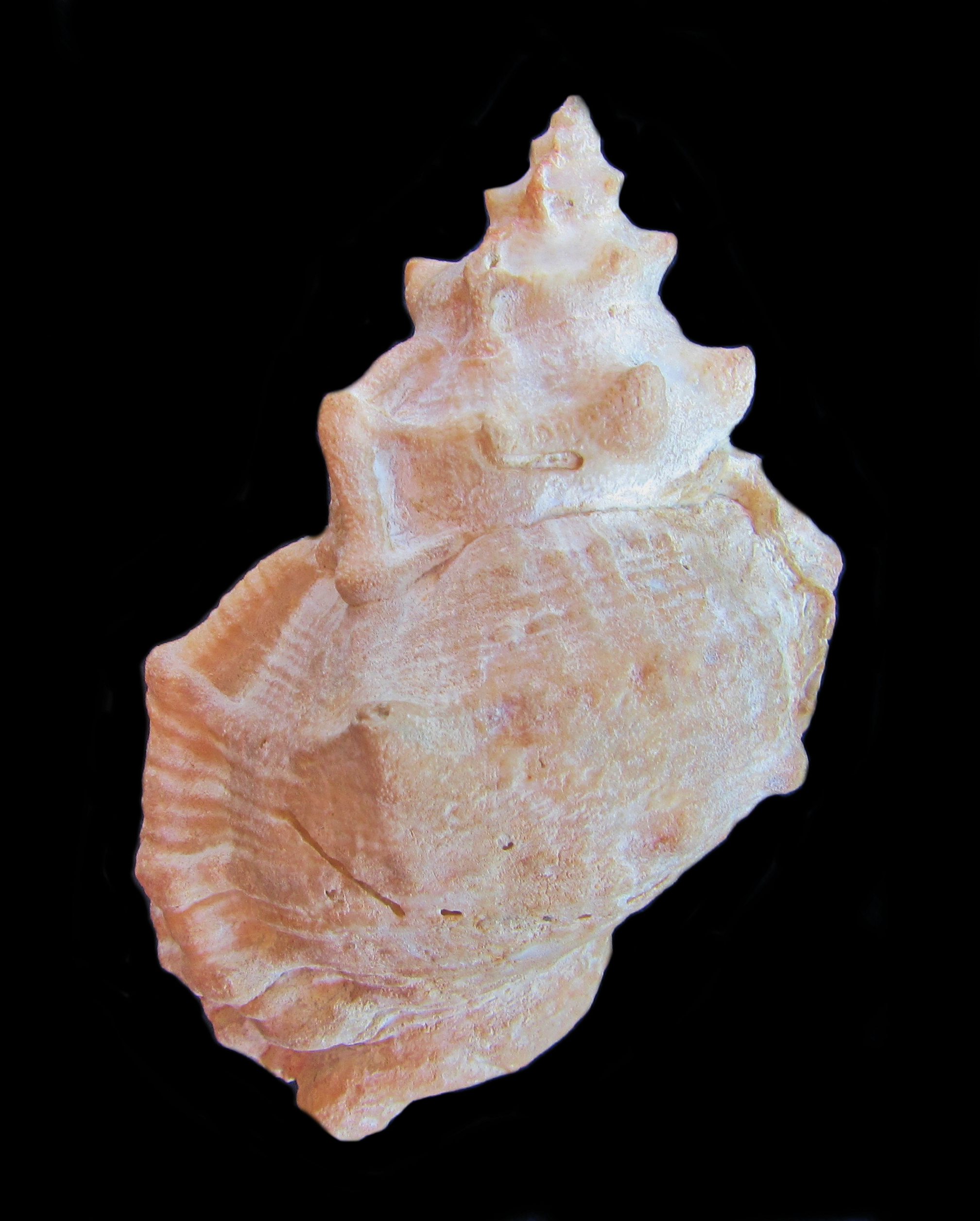California Frog Shell, Crossata californica

 California Frog Shell, Crossata californica. Size: 12.5 cm (5.0 inches) x 7.7 cm (3.0 inches). Shell collected off the beach in San Diego, San Diego, California, July 2015. Collection, photograph and identification courtesy of Bob Hillis, Ivins, Utah.
California Frog Shell, Crossata californica. Size: 12.5 cm (5.0 inches) x 7.7 cm (3.0 inches). Shell collected off the beach in San Diego, San Diego, California, July 2015. Collection, photograph and identification courtesy of Bob Hillis, Ivins, Utah.
Phylogeny: The California Frog Shell, Crossata californica (Hinds, 1843), is a gastropod mollusk that is a member of the Bursidae Family of Frog Shells. The genus Crossata is one of fifteen genera in this family, and there are three species in this genus.
Description: The California Frog Shell shell is robust and appears somewhat flattened because of its width. They have a body whorl marked with knobs, and a short spire. They have thick and knobby varices. The anterior and posterior canals are deep. The aperture has flared inner and outer lips, and it is longer than the spire is tall. The exterior of the shell is cream to tan in color with some southern specimens being encircled by a brown band. The interior is white. More southerly specimens tend to be smaller in size and have sharper sculpture. The California Frog Shells reach a maximum of 16.0 cm (6.3 inches) in length and 9.9 cm (3.9 inches) in height..
Habitat and Distribution: California Frog Shells are found on gravel, mud or sand substrate between rocks. They live at depths between 10 m (33 feet) and 180 m (585 feet). They are a temperate and tropical Eastern Pacific species. In Mexican waters they are found along the entire west coast of the Baja Peninsula, and in the southern half of the Gulf of California. Some sources extend this range to the West Coast of Central Mainland Mexico.
Ecology and Behavior: California Frog Shells are predators that feed primarily on polychaetes, which they anesthetize with their acidic saliva. They are gonochoric and reproduce sexually, through broadcast spawning. The eggs are laid in protective capsules, with up to 3000 eggs per capsule. The eggs are laid in the center of a single clam shell valve, in a circular pattern. The egg mass may contain 800,000 eggs. The females guards the eggs, for around 20 days, until the larvae begin to hatch. There is no mention in the available literature of them engaging in any types of parasitic, commensal, or symbiotic relationships. From a conservation perspective they have not been formally evaluated however they are fairly common with a relatively wide distribution and should be consider to be of Least Concern.
Synonyms: Bursa californica, Bursa californica sonorana, and Ranella californica.